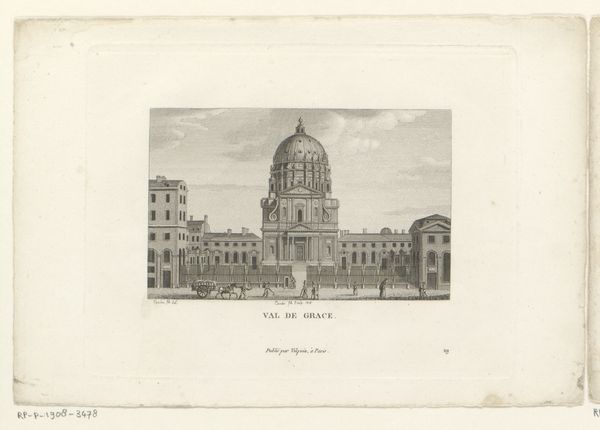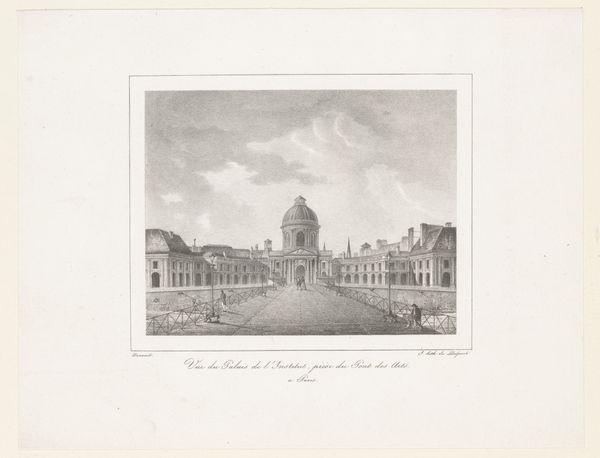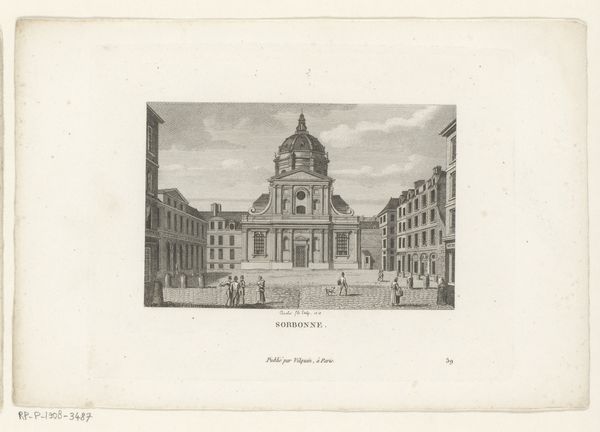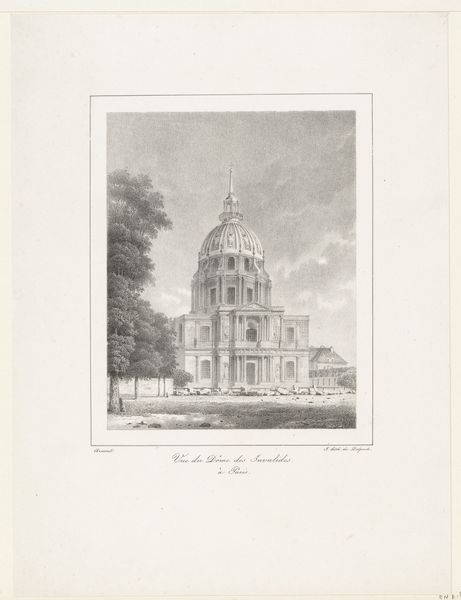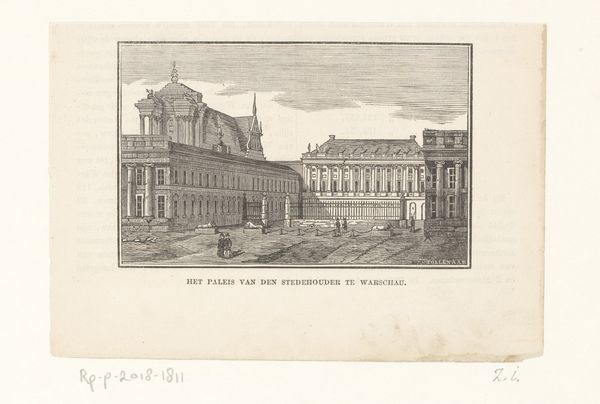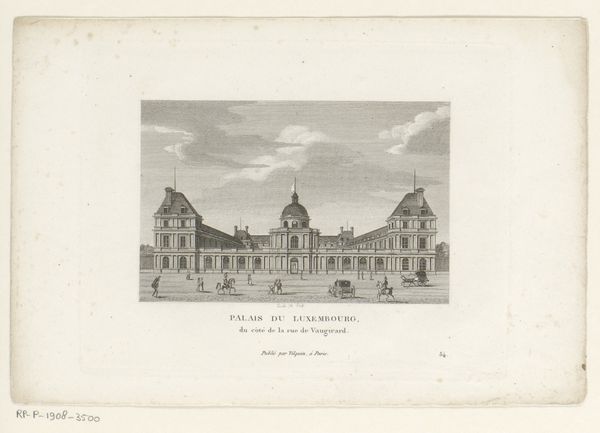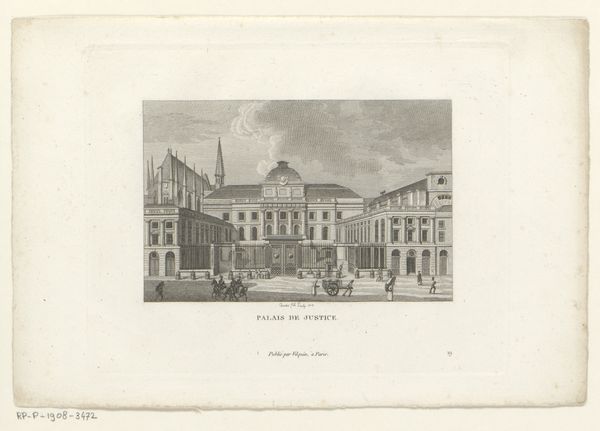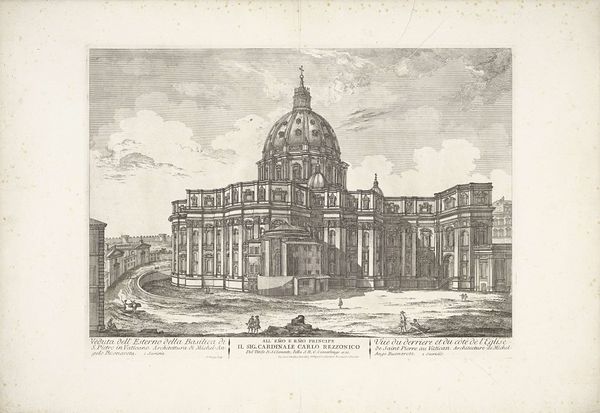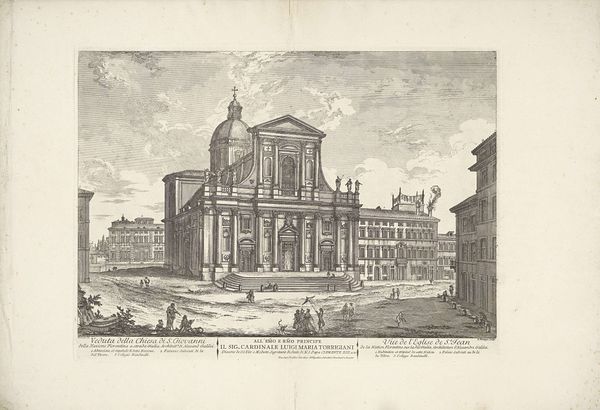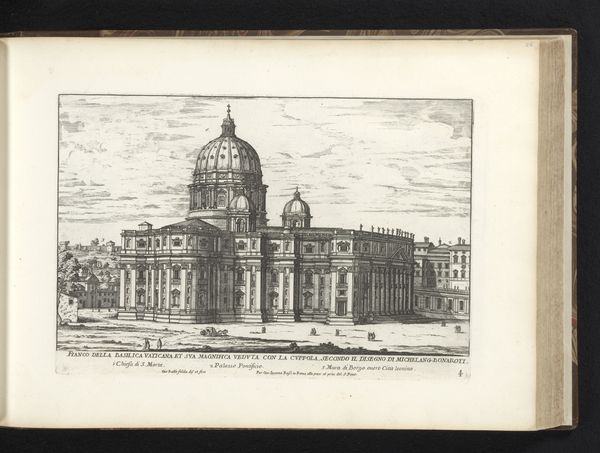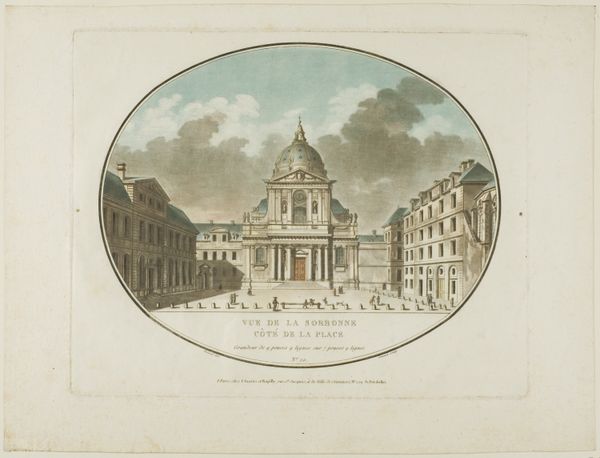
Zicht op de Chapelle Sainte Ursule de la Sorbonne in Parijs 1820 - 1821
0:00
0:00
print, engraving, architecture
#
neoclacissism
# print
#
perspective
#
cityscape
#
academic-art
#
engraving
#
architecture
#
realism
Dimensions: height 241 mm, width 318 mm
Copyright: Rijks Museum: Open Domain
Jean-Baptiste Arnout made this print of the Chapelle Sainte Ursule de la Sorbonne in Paris, using the technique of etching. This process involves coating a metal plate with a waxy, acid-resistant material, then scratching an image into the wax. The plate is then submerged in acid, which bites into the exposed metal, creating lines that will hold ink. The final print shows an amazing level of detail. Arnout was not only documenting the architecture, but also demonstrating the capabilities of the etching medium itself. Look closely, and you’ll see how he varied the density and weight of lines to create effects of light, shadow, and texture. The print embodies the industrial processes of its time; not only the skilled work of the etcher, but also the labor involved in preparing the printing plates, inking them, and running them through the press, resulting in multiple impressions. What may at first seem a straightforward architectural study is in fact a fascinating convergence of artistry and industry.
Comments
No comments
Be the first to comment and join the conversation on the ultimate creative platform.
